
Bicycle tour: The end of World War II in Berlin
Explore historical memorial sites from Berlin Mitte to Wannsee by bike
On this thematic bicycle tour you learn more about the end of the war in Berlin and the historic date of 8 May 1945. You will pass numerous historical sites and memorials that bear witness to the time of World War II and the Nazi Government of the Reich.
In our story app ABOUT BERLIN you will find detailed background stories about the individual places. Historical pictures, video interviews with contemporary witnesses and an audio collage of original diary entries from the last days of the war complete the offer.
- Download the app for free here:


The route from Mitte to Wannsee: Learn more about World War II in Berlin
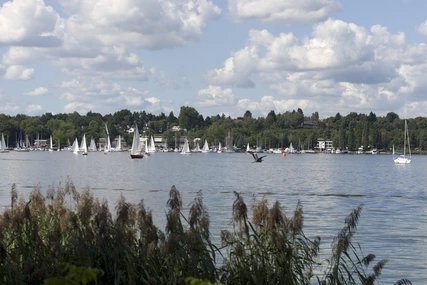
The 27.9-kilometre-long tour follows mostly cycle-friendly routes from the city centre past numerous sights and memorials along the Spree and Tiergarten, via Kurfürstendamm and Königsalle to Grunewald. From here, the tour continues on the Königsweg-Kronprinzessinnenweg bike-expressway.
Start: Former employment office in the Gormannstraße
On November 5, 1923, thousands of unemployed people gathered here in front of the employment office in Gormannstraße to receive benefits. At 11 o'clock the crowd was informed that there would be no money. The people thereupon searched for guilty parties, agitators (Völkische Hetzer) stirred up the crowd against the Jews from the Scheunenviertel. The first riots broke out.
Linienstraße
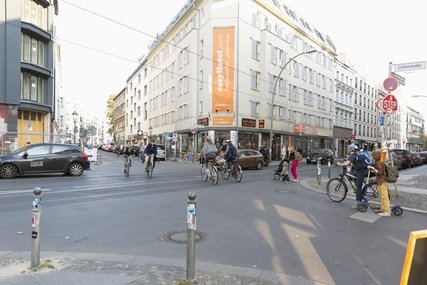
Continue on Linienstraße. On this designated two-kilometre-long bike route, you will get safely through the city centre to the Oranienburg Tor, where you turn left into Chausseestraße. By the way, Franz Bieberkopf, protagonist of Alfred Döblin's novel Berlin Alexanderplatz, also lived in Linienstraße.
Kronprinzenbrücke
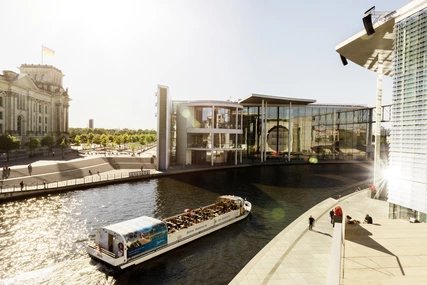
From Chausseestraße turn right into Reinhardtstraße and drive towards the Kronprinzenbrücke over the Spree. Here you have a perfect view of the government quarter.
Reichstag

To date, there are no historical documents that can prove National Socialist involvement in the Reichstag fire. And yet this event became a symbol of the National Socialists' seizure of power. Propaganda Minister Joseph Goebbels uses the fire as an excuse to eliminate political opponents. A few hours after the fire, the National Socialists arrest hundreds of KPD functionaries in Berlin. In the course of the day, the Reich Cabinet (Reichskabinett) suspends basic democratic rights.
More about Reichstag & Government District
Memorial to the Murdered Jews of Europe

The terrible consequences of the National Socialists' seizure of power are commemorated by the Memorial to the Murdered Jews of Europe. 2711 steles are immovable memorials that symbolize the suffering and death of millions of people. Take some time to look into the stories of the Jewish victims of the Holocaust who are known by name. It would take six years, seven months and 27 days to read the audio biographies of all the known victims in the Room of Names.
History Mile Wilhelmstraße
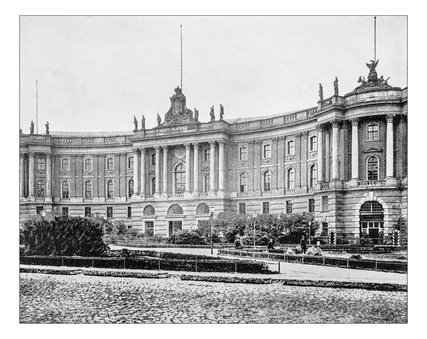
The tour continues on the Wilhelmstraße History Mile, which you turn right onto. Since Bismarck, the Wilhelmstraße has been a symbol of political power. Since 1919, the German head of state, the President of the Reich, has resided here. On 30 January 1933, the National Socialists took over the ministries of the Weimar Republic. In addition to the buildings, several commemorative and information plaques commemorate this period. You will pass the former Reich Chancellery, the former Propaganda Ministry and the former Reich Aviation Ministry.
Topography of Terror
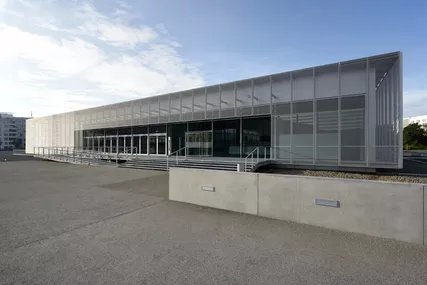
The headquarters of the Secret State Police (Gestapo), the Reichsführung-SS and the Security Service (SD) of the SS were located here, as was the Reich Security Main Office from 1939. It was from here that the Nazi regime organized its policy of persecution and annihilation of political and "racial" opponents in the German Reich and in the occupied territories with the concentration camp system it had created. Although there is no pre-war building on the site today, the exhibition and documentation centre offers a comprehensive insight. The site also includes the longest remaining piece of the Berlin Wall in central Berlin.
Memorial to the Victims of the Nazi "Euthanasia" Murders
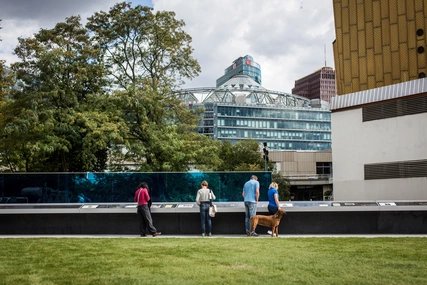
Now pass the Gropiusbau building and turn right into Stresemannstraße and drive towards Potsdamer Platz. Here you turn left onto Potsdamer Straße. Pass the Sony Center and drive towards the Philharmonie. Not far from here, at Tiergartenstraße 4, you will find the memorial to the "euthanasia victims" of National Socialism.
German Resistance Memorial Center
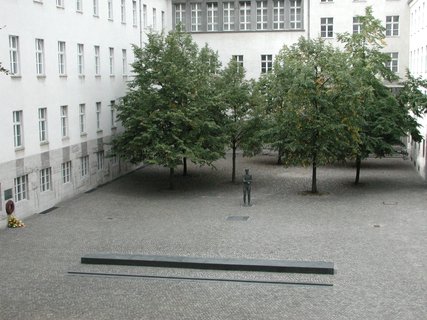
The tour continues on Potsdamer Strasse through the cultural centre of Berlin, past the Kulturforum and St. Matthäus Church. When you reach the Neue Nationalgalerie, turn right into Sigismundstraße and then left into Stauffenbergstraße. In the courtyard of the Federal Ministry of Defence you will see the sculpture of a young man with bound hands. The inscription in honour of the resistance fighters of 20 July 1944 reads: "You did not bear the shame, you resisted, you gave the great eternally awake sign of repentance, sacrificing your hot life for freedom, justice and honour".
Memorial Kurfürstenstraße
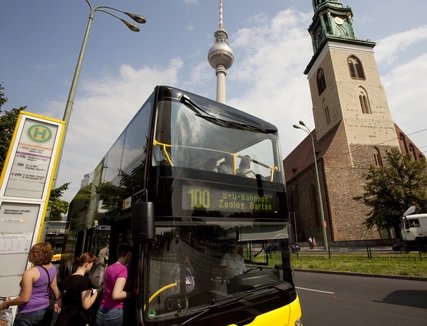
Turn right at Landwehrkanal and take the bridge at Lützowplatz. Continue along Schillerstraße to Kurfürstenstraße. The bus stop here is a memorial. Because a few meters behind the bus stop was the building of the former Jewish Department, a department of the secret state police. Today there is a 60's building here where tourists stay overnight. The bus line 100, on whose route the most important sights of Berlin are located, passes every five minutes.
Kaiser Wilhelm Memorial Church
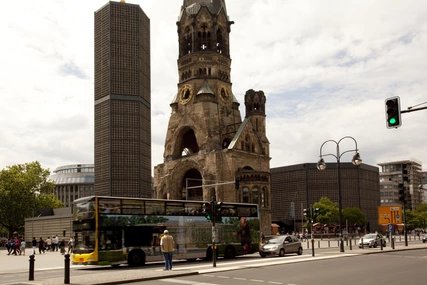
Continue in the direction of the zoo. Before you reach the famous Elephant Gate, turn left into Nürnberger Straße and then right into Tauentzienstraße to the Kaiser Wilhelm Memorial Church, probably Berlin's most famous landmark, whose destroyed church tower is a reminder of peace.
Memorial Track 17 (Gleis 17)

Continue along Kurfürstendamm to Halensee, cross the railway tracks and Rathenauplatz and turn right onto Köngisallee. At the memorial stone for Walther Rathenau, the Reich Foreign Minister of the German Republic murdered on 24 June 1922, follow Erdener Straße and then turn left into Trabener Straße. At Grunewald railway station, the bronze plaque at track 17 commemorates the deportation trains used to deport thousands of Jews from Berlin to concentration and labour camps.
House of the Wannsee Conference

Cross the tracks here towards Grunewald and turn left. You are now on the Königsweg-Kronprinzessinnenweg bike expressway, which takes you along a dead straight through the forest to Wannsee. A permanent exhibition in the House of the Wannsee Conference deals with the subject of anti-Semitism and what has remained of it to this day.
More historically important places
- German-Russion Museum Berlin-Karlshorst
- Cecilienhof Palace and the Potsdam Conference
- Alliierten Museum
- Soviet Memorial Treptow
- Nazi Forced Labour Documentation Center
- Learn more about these and other places in our ABOUT BERLIN App.
Tip:
- Around the Wannsee you will find numerous beautiful places to take a break in between. The S1 will take you back to the city center.
